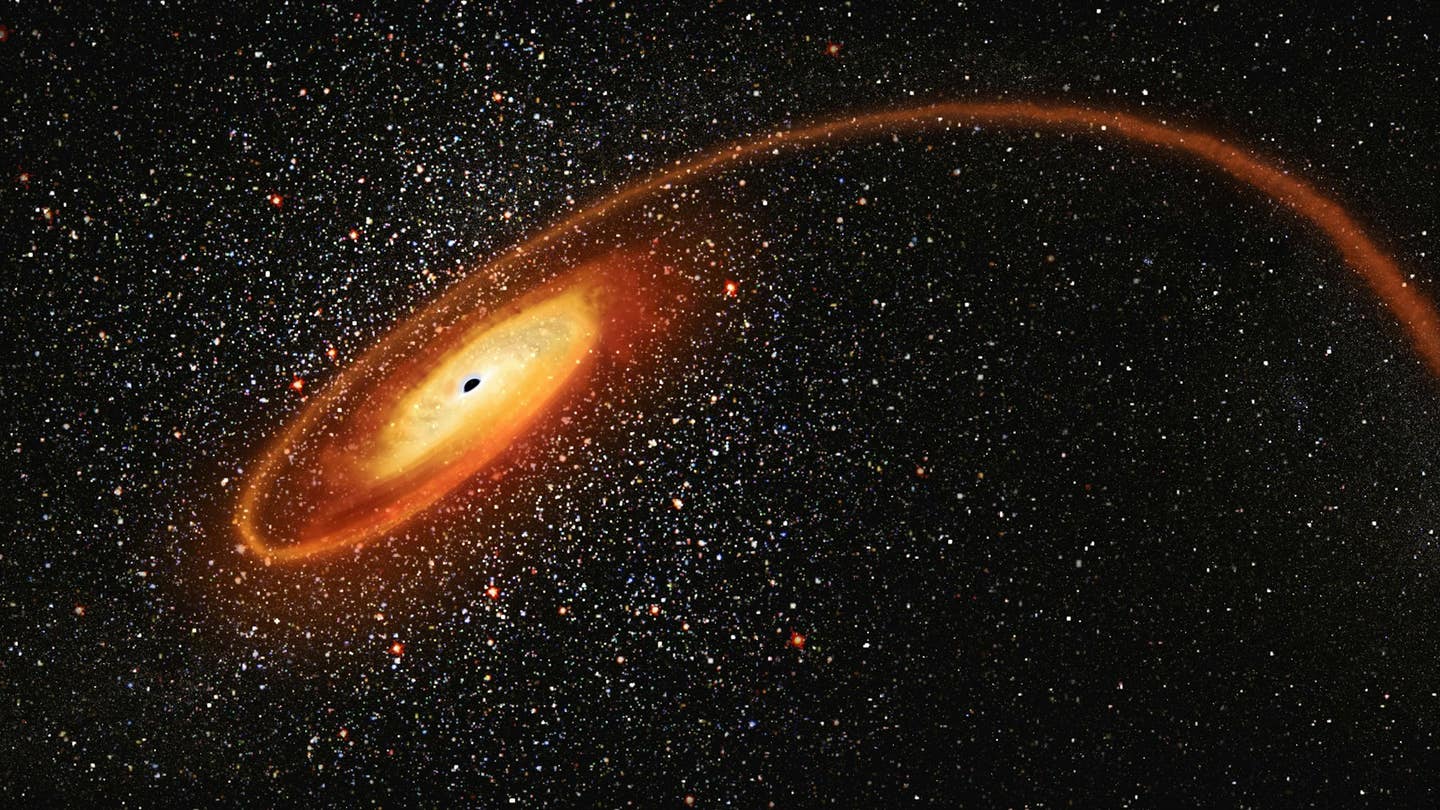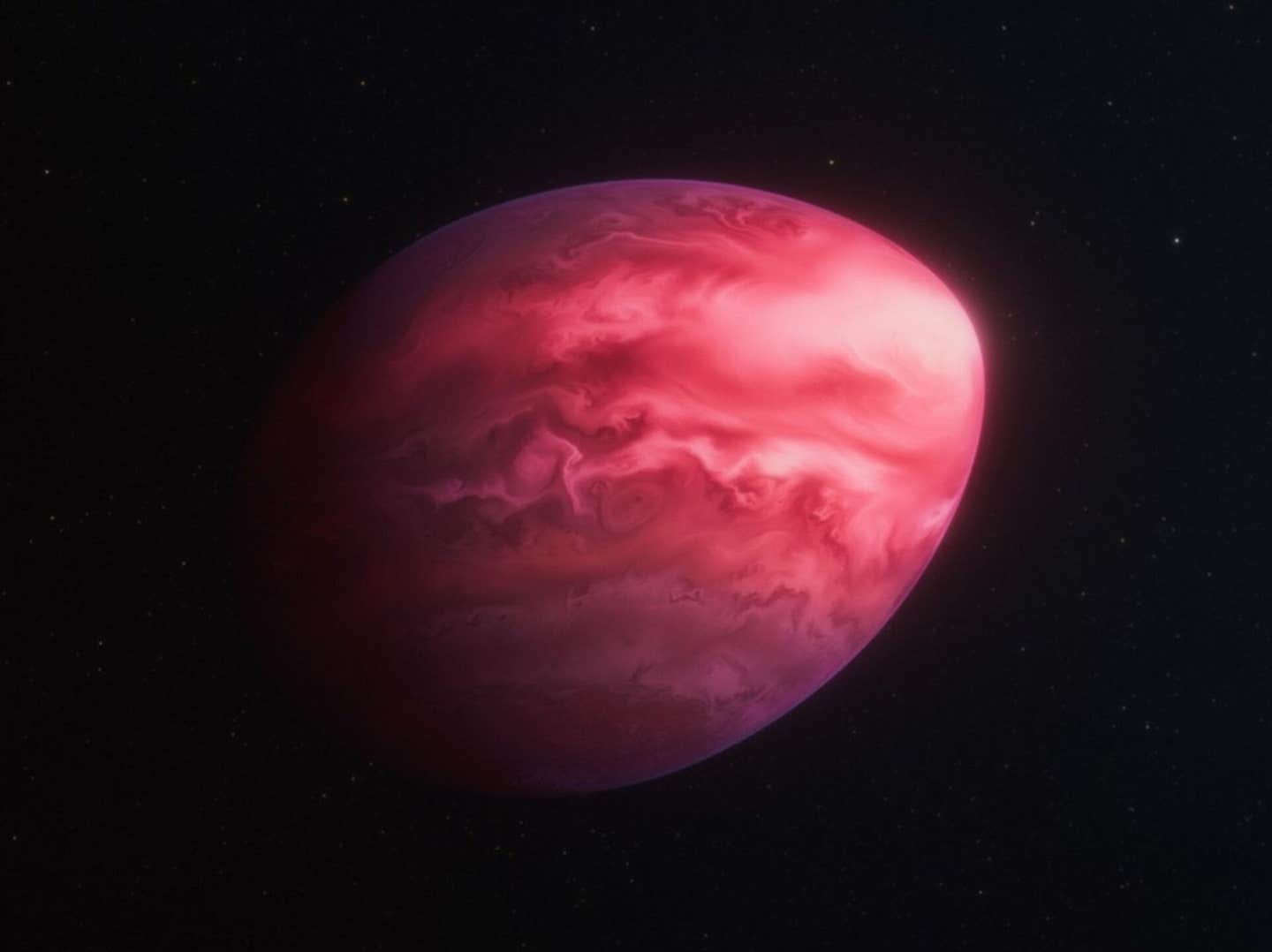Space travel to a nearby black hole could happen in the next 100 years
A laser‑propelled nanocraft could enable an interstellar mission to a black hole, testing gravity’s limits within a century.

Cosimo Bambi’s proposal envisions an interstellar mission to a black hole using tiny, laser‑driven probes. (CREDIT: NASA, ESA, and D. Player (STScI))
An interstellar mission to a black hole may sound impossibly bold, yet a new concept by astrophysicist Cosimo Bambi of Fudan University outlines how a tiny, laser‑propelled probe could make the trip within a human lifetime.
Published in iScience, this vision describes how gram‑scale nanocrafts could journey to a nearby black hole and directly test the depths of gravitational physics. The idea may reshape how humanity studies the most extreme objects in space.
Seeking the Invisible: The Search for a Nearby Black Hole
Finding a hidden black hole close by is the first challenge. Known black holes such as GAIA‑BH1 lie over 1,500 light‑years away, but Bambi estimates that as many as one black hole may exist within 20–25 light‑years—based on rough counts of stellar and white‑dwarf densities in our region of the galaxy.
Detecting one would require new techniques like microlensing or gravitational wave events from a transient electromagnetic event, both of which could pick up the pull of an otherwise invisible object. Given rapid advances in these methods, Bambi argues we could locate a suitable target within ten years.
The heart of this vision lies in the interstellar mission to a black hole itself. It would rely on nanocrafts—space probes weighing just a few grams, each composed of a silicon‑chip‑like wafer and a reflective light sail made from advanced metamaterials. A powerful laser array on Earth would push the sail, driving the craft to speeds approaching a third of light speed.
A Laser Ride to the Event Horizon
At that pace, a black hole 20–25 light‑years away could be reached in about 60–75 years. Once data is gathered, signals would take another 20‑25 years to return, making the mission’s full timeline around 80–100 years—possibly shorter if higher speeds are achieved.
Related Stories
- Global First: Physicists simulate wormhole travel using quantum computer
- Our universe may exist inside a spinning black hole, JWST finds
This is not just a trip through space. The mission would conduct extraordinary experiments near a black hole’s extreme gravity. If two (or more) nanocrafts are used, one could orbit closer in while another watches. The inner craft could beam a steady electromagnetic signal back to its partner. According to general relativity, the timing of that signal should match predictions of the Kerr metric, which describes spacetime around a rotating black hole. Deviations could reveal new gravitational physics.
Another key test involves crossing—or approaching—an event horizon. If a nanocraft falls into a true black hole, its signal should grow ever redshifted until it vanishes from view. But if the object is a “fuzzball” with no horizon, the signal might disappear suddenly. Only a direct mission could reveal the truth.
Scientists could also test whether fundamental constants like the fine‑structure constant change under the pull of intense gravity. If one craft emits photons from two different atomic transitions, and the partner measures them, any mismatch in how those photons shift could imply changes to constants under extreme conditions.
Bridging Vision and Technology
Despite the scientific payoff, major hurdles remain. The laser infrastructure alone would cost roughly one trillion euros today, though Bambi anticipates costs dropping significantly over 20–30 years. Nanocraft technology, including durable light sails and miniaturized instruments, still needs development.
Communication across light‑years, navigation, and target precision are daunting. Yet Bambi points out that breakthroughs once deemed impossible—like detecting gravitational waves or imaging black hole shadows—are now realities. His goal is to spark conversation unlike anything before in theoretical astrophysics.
With this, the author hopes to launch a century‑long project that may one day open a direct window into gravity’s most extreme realm. If realized, the interstellar mission to a black hole could test relativity under conditions unreachable by any Earth‑bound observation. Future generations may begin building and planning—while today's scientists lay the groundwork.
Past Studies and Findings:
Early missions to probe gravity relied on telescopes and probes within the Solar System, such as tracking spacecraft at Jupiter or using the Event Horizon Telescope to image M87’s black hole shadow.
Meanwhile, theoreticians explored how nanocrafts could reach nearby stars—most notably through the Breakthrough Starshot initiative, aiming to send gram‑scale probes toward Alpha Centauri using laser sails. These studies helped demonstrate that lightweight photonic propulsion could achieve relativistic speeds.
Astronomers have also refined techniques to find isolated, non‑emitting black holes. The detection of GAIA‑BH1 at 1,560 light‑years came through observing its companion’s wobble. New methods like detecting microlensing effects or gravitational waves from transient signals are emerging.
Simulations suggest a nearby black hole may lie hidden within 20–25 light‑years, though none are confirmed yet. These advances in detecting candidates, combined with progress in miniaturization and laser arrays, make Bambi’s proposal a clearer possibility today than when first imagined.
Gateway to the Future:
If carried forward, this interstellar mission to a black hole could transform astrophysics. Direct measurements of spacetime in extreme gravity would either reaffirm or challenge Einstein’s theory.
The mission could pioneer ultra‑miniaturized spacecraft, powerful yet compact detectors, and laser systems of unprecedented scale. It might inspire new exploration beyond our solar neighborhood, driven by scientific inquiry rather than mere curiosity. For humanity, it would signal a shift from watching cosmic extremes to entering them.
What We’ve Learned:
- A laser‑driven nanocraft could travel to a black hole within a century.
- Such a mission would enable direct tests of relativity, event horizons, and fundamental constants.
- Advances in detection and miniaturization now make a bold interstellar mission conceivable.
Note: The article above provided above by The Brighter Side of News.
Like these kind of feel good stories? Get The Brighter Side of News' newsletter.



